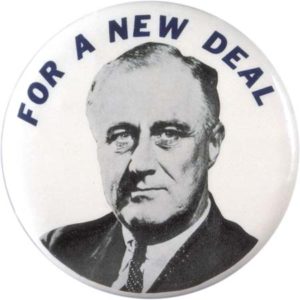 Doctors got an unexpected surprise this week: The Ontario government offered doctors a tentative contract, in the middle of July.
Doctors got an unexpected surprise this week: The Ontario government offered doctors a tentative contract, in the middle of July.
The board of the Ontario Medical Association (OMA) voted to support the new deal and share it with members.
People have asked what I think about the contract.
The Board voted to let the doctors of Ontario decide. As a Board member, I support the wisdom of the Board in this decision. If I absolutely could not support the Board’s decision, I would have to step down.
I found this decision very hard. I keep learning more about the deal each time I look at it. I’d love to hear what you think.
New Deal
Doctors in Ontario are desperate. After 2 years of attacks, cuts, and slander from this government, doctors beg for stability. This new deal seems to offer that.
Why Doctors Might Like It
No more unilateral cuts – Doctors will cheer for anyone who offers to end cuts. Doctors cannot run clinics, when government cuts payments without warning. No business could handle such caprice.
Co-Management – This contract promises to welcome doctors back. Many find this irresistible. Government has usurped control and progressively shut doctors out of healthcare governance, over the last 40 years.
Modernization of the Schedule of Benefits – This deal proposes to fix relativity (Some doctors bill high fees for easy work; others bill low fees for hard work). Doctors have failed to fix this since the 1980s.
Charter Challenge Protected – This requires lawyers to explain, but they say that this contract will not undermine the Challenge.
Better Than the Alternative – Based on current utilization, the negotiated funding for growth, one-time payments, and two Schedule of Benefits modernizations is expected to keep spending within the planned PSB and one-time payments. We shouldn’t need further adjustments. But if government keeps to its current behaviour, it plans over $1.1 billion in cuts over 4 years of unilateral action.
Why Doctors Might Pause
No Reversal of Previous Cuts – The physician services budget (PSB) sits at $11.452 billion dollars, after approximately $700-800 million dollars of cuts.
Enough Growth? – The government has offered to fund 2.5% growth of the PSB. This means that the MOH has agreed to fund 2.5% more physician services per year.
Note: physicians’ fees stay the same. If a fee was $33 dollars last year, it is $33 this year.
A promise to fund 2.5% more services marks a huge improvement over the 1.25% that government funded last year.
However, growth has been around 3.2% for the last 15 years. Each year, 150,000 new patients come to Ontario, and almost 1000 new doctors start practice. Can anyone contain utilization?
One-time payments – These are expected to cover the difference in funding noted above, but only if growth is contained at 2.5%. Doctors could earn an almost 0.8% annual bonus, if all doctors work together to find permanent savings in each year of the contract.
Shifting Risk – This contract seems to give government the predictability they wanted in the PSB. Is that reasonable? Does this increase the likelihood of reconciliation if growth goes beyond the 2.5% + one-time payments? How will this be handled and will there be winners and losers?
Hard Times
Doctors in Ontario have faced cuts of up to 30% net, since 2012. At the same time, they struggle to find care for their patients.
For example, patients wait up to a year just to see an orthopaedic surgeon, in my area, and another 9 months to get their hip replaced. On top of this, government has cut hospital funding for the last 9 years and also cut over 1400 nurse positions.
Doctors are tired. They want a contract. A contract seems to provide predictability and lets doctors apply for loans to purchase equipment that patients need for care.
Members Decide
Doctors need to ask: Does this contract offer something good for patients and doctors in Ontario?
Doctors will not get a raise. Inflation will eat into their earnings. But doctors will get certainty for 4 years. Doctors will not get unilateral action.
What will patients get?
Do the pros outweigh the cons?
What will government do if doctors do not accept this deal?
What options do doctors have?
Doctors face a huge decision, possibly the biggest decision of their careers. They need to ask hard questions about: certainty, growth, rationing, and relativity.
Doctors need to do whatever they can to inform themselves.
Doctors needed something concrete from government. Members needed to see this contract, and the Board is wise to trust members with the decision.
The OMA Board has committed to inform members through special meetings and information sessions. Physician leaders across the province should be able to answer questions from their colleagues.
The current situation was unsustainable. Can doctors trust government again? Please ask hard questions. Let’s hope patients like how this turns out.
photo credit: www.brittanica.com
Note: OMA communications and negotiations reviewed a draft of this post. They offered helpful edits and re-focussed the content on the deal. I added a few comments and made final edits after that. I assume responsibility for all errors.







